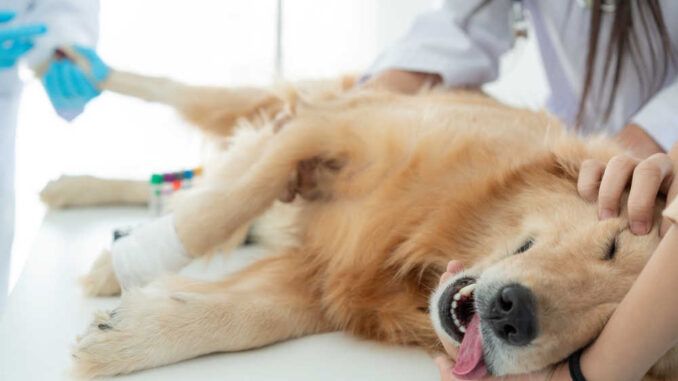
If your dog has stitches for any reason, there’s always a chance that those stitches won’t hold. Even with the best of intentions, life happens causing spay, neuter or other surgery incisions to break open. Fortunately, it’s not a common issue that I’ve seen in the hundreds of surgeries that I have done, but it does happen. Here’s what to do if your dog’s stitches break or open.
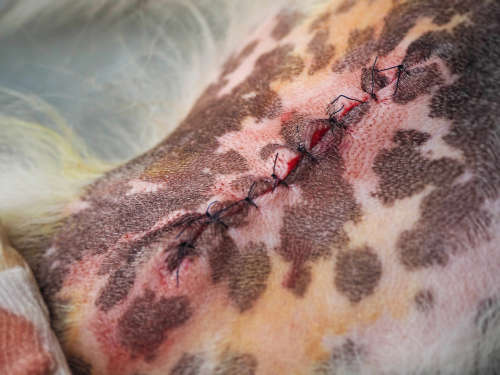
First-aid For Incisions that Break Open
What you end up doing for your pup is going to depend on whether it’s a neuter or spay incision and when in the healing timeline the surgery wound broke open.
Your first step is to call your vet: start off by calling your vet to find out if they want to see your pup or if you can take care of things at home.
Neuter incisions:
If the stitches broke within the first few days following neuter surgery and there is bleeding (or your pup is licking at the incision), start by contacting your vet. They may want to see your dog or recommend cleaning the incision with a damp cloth.
“If the incision is bleeding, you can apply a light clean wrap using an ace bandage with an absorbent material such as gauze or a sanitary pad. Place the absorbent material over the clean incision and then wrap the ace bandage around it, going around your dog’s belly, over their back and around each hindleg. This will help keep the area clean and stop any excessive bleeding before you get to your vet’s office.”
If your dog’s neuter incision broke open after the first few days and there is no bleeding: your vet may advise that you monitor it at home. Be sure your pup can’t lick it and keep it clean and dry. The incision may take a few days longer to heal, but should still heal fine as long as you can keep them from bothering it. This may take the assistance of an e-collar. Watch the incision for bleeding, redness, swelling, or discharge. Before taking any action, it is advisable to consult with your veterinarian to determine the best course of action based on your dog’s individual situation.
Spay incisions:
For dog spay incisions that break open within the first few days following surgery, apply a wrap and see your veterinarian. If the skin incision breaks open later on in healing, your vet may still want to see your pup to make sure the body wall incision is okay and then have you monitor the situation from home.
The main takeaway here is to call your vet first and describe what you’re seeing. They will be able to tell you if it’s an emergency or not and give you instructions from there.
Incision from other surgeries:
Incision from other surgeries should be treated in a similar way. Contact your vet. If there is any bleeding, swelling, or discharge, of if the incision breaks open in the first few days, see your vet immediately. If it breaks open after some healing, your vet may advise you to monitor at home.
“Any incision into the abdomen that breaks open should be seen as an emergency. Any incision that is bleeding profusely or has a smelly discharge, especially if your dog isn’t feeling well either, should be seen as an emergency as well.”
How a Vet Will Treat a Surgery Incision that Broke Open
Your vet is definitely going to want to see any surgery incision that breaks open early on. They will want to make sure there is no fat or other structures coming through and that there isn’t a lot of bleeding or risk of infection.
From there, your vet may decide to reclose the wound or allow it to heal as is:
- Allowing healing without reclosure is left more for dog neuter incisions that break open or for spay skin incisions that open later on.
- If the incision needs reclosed, sedation or anesthesia will be needed, the edges will be cleaned up and reclosed with stitches or staples.
Look to pay anywhere from $50 for an exam and antibiotics if the wound is going to be left to heal, or $100-$300+ for a full reclosure.
What You Need to Know
So, what’s the big deal if your dog’s surgery incision breaks open? For some dogs it can be a really big deal, females especially. Here’s why: a dog spay requires the vet to make a cut through the body wall. That’s the wall that keeps all internal organs inside the body.
Spay incisions: If that incision breaks open, it creates a chink in the body wall armor and could possibly allow inside parts to come outside. This is an emergency situation that can result in severe complications or even death.
Neuter incisions: Now, if a dog neuter incision breaks open, the good news is there is little chance for internal organs to come out, but there is still the chance for lots of bleeding and infection to happen. While not as catastrophic as with a female, you still don’t want your pup to have to deal with those, so getting veterinary attention as soon as possible is best.
When Is It An Emergency?
If your pup happens to break some stitches and open their surgery incision within the first week following surgery, see your veterinarian. This goes for both neuters and spays. If your dog’s neuter incision breaks more toward that 7-10 day mark and you don’t see any discharge or swelling and your dog feels pretty comfortable, you may just want to call your vet to check in.
If your dog’s spay incision, breaks open at any time before it’s completely healed, see your vet. You don’t want to compromise that body wall incision and risk any internal things becoming external. If the skin incision breaks open toward the end of healing, your vet may advise you to wait and watch, but you should still be in contact with them just to be sure.
FAQs about incisions or stiches breaking open
Can I use any medication to help?
You really shouldn’t have to put anything on your dog’s surgery incision. It will typically heal well on its own as long as it’s kept clean and unbothered. However, if the incision is a little irritated or happens to pop a stitch or two later in the healing process, your vet may advise you to put a little triple antibiotic ointment on it to help promote healing and prevent infection. Only apply ointments under the direction of your veterinarian.
Should I use a cone to prevent further injury?
If your dog licked, chewed, or otherwise removed their stitches, using a cone or e-collar may be the best way to prevent further damage or from it happening again.
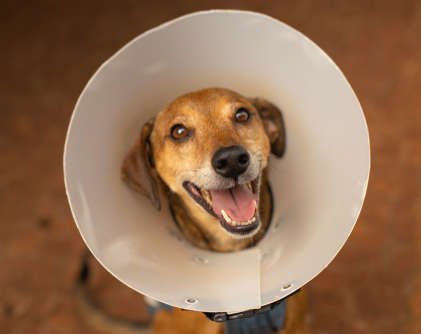
Using an e-collar or light bandage is the best way to put a stop to licking a surgery incision. Other options include no-lick ointments or Tabasco sauce around the incision. For even more ideas, check out this article.
What are the signs to monitor?
A broken incision is going to look different depending on when in the healing process the stitches broke. If the surgery stitches break within the first few days following surgery, you may see:
- An open wound
- Bleeding or other discharge
- Swelling and redness
- Lumps or bumps in the incision
- Excessive licking
- Pain or discomfort
If the stitches break later on towards the end of healing, you may only notice that your pup no longer has stitches or you may notice a slight gap in the once tight incision.
Dog spay incisions that break open are a special concern over dog neuters because you have an incision that goes through the body wall into the abdomen. You also have an incision in the skin making it possible for one or both to break open. If the skin incision breaks open, you may see the bleeding and redness.
If the body wall incision breaks open, it could be bad news as internal fat or organs, such as the intestines, may try to find their way out. This can create lumps or bumps in the skin incision. If they both break open, it’s really bad news as those internal organs could find their way clear to the outside.
What Causes a Dog’s Surgery Incisions or Stitches to Break?
There are many reasons why your dog goes home from a surgery with a list of what to and not to dos. It’s to protect that incision and your dog’s health. Many things can cause that incision to break open or one or more stitches to break. Those include:
1. Movement
Too much movement, especially strenuous or powerful moves, such as jumping, running, or playing, can cause stitches to break. Suture material is only so strong, and it can’t withstand heavy forces that a dog is capable of applying to it. That is why your vet will ask that you confine your pup and only allow short leash walks until that incision is healed, usually 10-14 days. Anything more than that can cause stitches to break and dog neuter and spay incisions to open.
2. Dog Interference
For the first few days there is nothing your dog will want to do more than lick the surgery site. It’s just in their nature to try to heal and soothe that wound. However, too much licking can actually cause stitches to come out or break, as shown on the picture below.
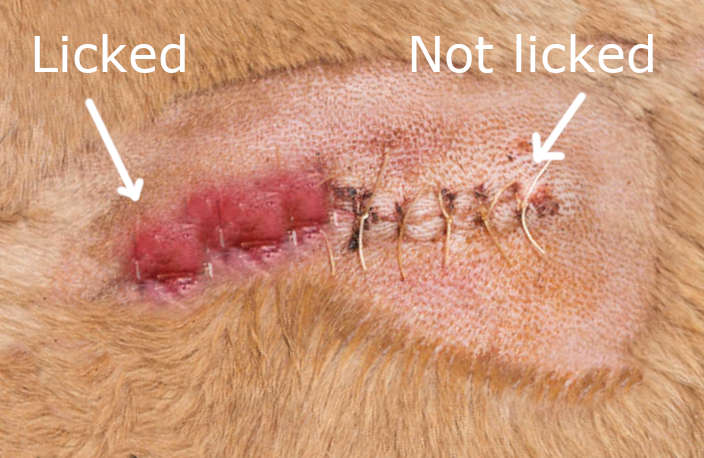
Most vets will send your pup home with an e-collar or light bandage to keep curious tongues, teeth, and even toenails away from the incision.
This goes for other pets as well. Our furry friends feel each other’s pain and often try to help out. Be sure that other pets aren’t allowed to lick your dog’s surgery wound either as it can lead to the same issues.
3. Infection
Through sterile procedure, antibiotics, and proper postop hygiene, you can greatly reduce your dog’s chance of developing an infection. But you can’t reduce it 100%. Your dog’s surgery incision is at risk of infection from about day 2-3 after surgery until the incision is completely healed.
Infections cause irritation to the skin in the form of redness, swelling, and discharge. They can also cause a foul odor. All of this weakens the skin, potentially leading to stitches coming out and the surgery incision breaking open.
4. Dehiscence
Dehiscence is just a fancy word for a wound that breaks down or doesn’t heal. When this happens, the edges of the skin or body wall fail to knit back together which can also lead to stitches coming out. Dehiscence can happen due to an infection or an underlying health condition that decreases the immune response or affects blood flow to the area.
5. Faulty Stitch or Material
Occasionally, surgery stitches may break because of a faulty stitch. This just means one that wasn’t placed deep enough in the skin or body wall or wasn’t tied tightly enough. If one stitch comes out, it can lead to many stitches coming out depending on the suturing pattern that was used. Even more rarely, suture material may be less than quality and break with very little force put on it. Both of these causes are very low frequency but should still be mentioned.
How can I prevent the incision from breaking again in the future?
Follow your vet’s recovery directions to a tee. This means keeping them quiet with no running, jumping, or playing for at least the first week, no bathing, monitoring the incision and preventing licking. You should also never hesitate to contact your vet if you have any questions about how your dog’s surgery incision is healing.
Disclaimer: This website's content is not a substitute for veterinary care. Always consult with your veterinarian for healthcare decisions. Read More.




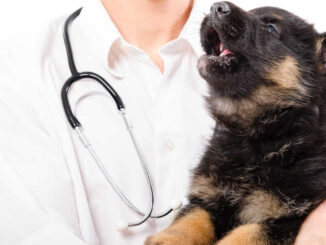
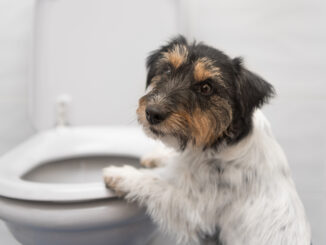
Be the first to comment